Lecture 30
Climate Change III: Adaptation
November 25, 2024
Climate Adaptation: Managing Water Shortages
Climate Adaptation: Managing Water Shortages
U.S. Drought Map
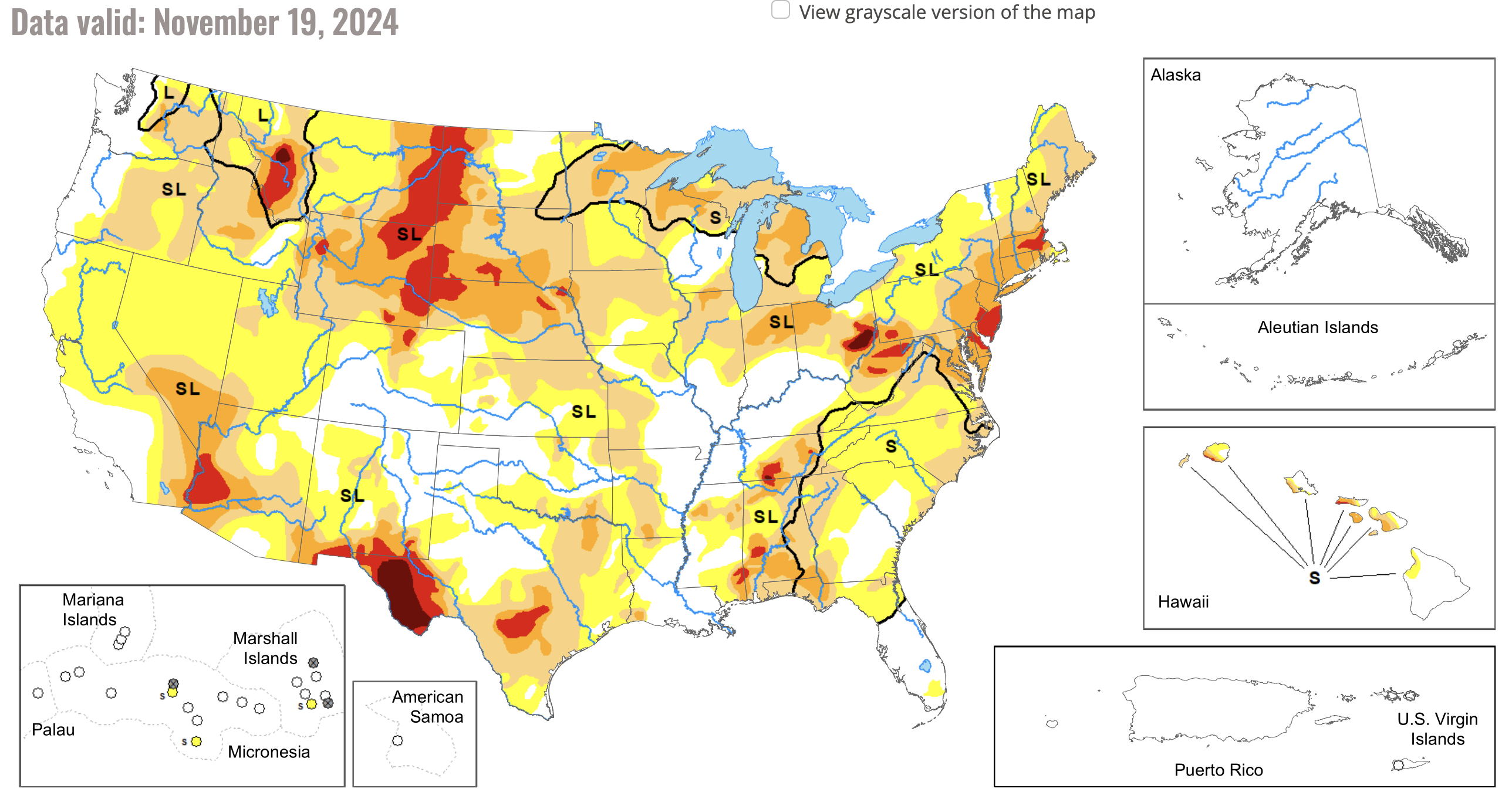
Climate Adaptation: Managing Water Shortages
Strategies to Address Water Shortages
- Dual Impacts of Climate Change
- Flooding: Increased frequency and intensity in some areas.
- Water Scarcity: Increased droughts and shortages in others.
- Increasing Water Supplies:
- Desalination: Converting seawater to freshwater.
- Wastewater Recycling: Treating and reusing water.
- Rainwater Harvesting: Capturing and storing rainwater.
- Demand Management:
- Conservation: Encouraging reduced water use.
- Pricing Mechanisms: Adjusting prices to reflect scarcity.
Efficient Allocation of Scarce Water
Surface Water vs. Groundwater
- Surface Water:
- Allocation among users without affecting future supplies.
- Key considerations for efficient allocation:
- Balancing competing demands from various users.
- Managing year-to-year variability in water flow effectively.
- Groundwater:
- Withdrawals impact future availability.
- Requires intertemporal allocation to ensure sustainable use.
The Efficient Allocation of Surface Water
Principles of Efficient Allocation
- Equalizing Marginal Net Benefits (MNB):
- Water should be allocated so \(MNB\) is equal across all uses.
- Maximizes total net benefits from water use.
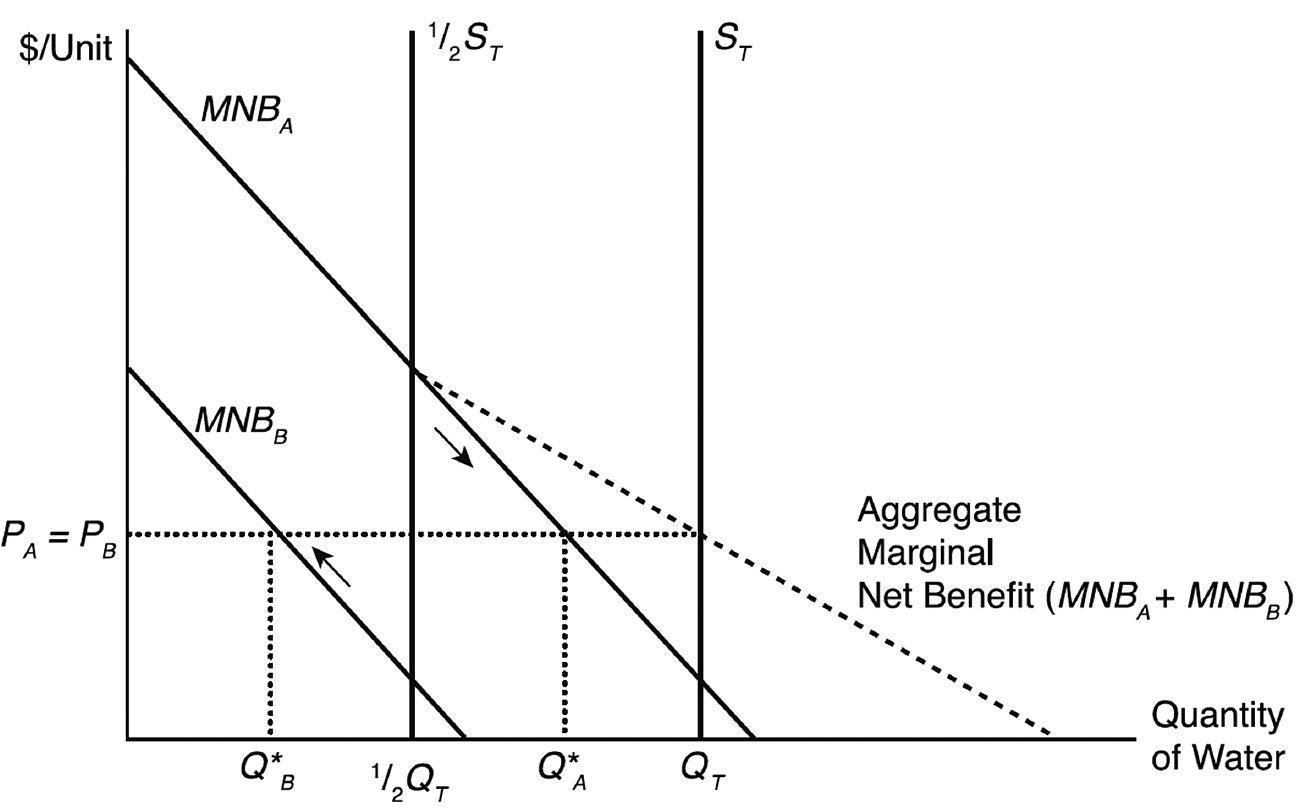
- Supply Curve (\(S_T\)): Total available water (\(Q_{T}\)).
- Demand Curves:
- User A: Higher willingness to pay (e.g., municipality).
- User B: Lower willingness to pay (e.g., agriculture).
The Efficient Allocation of Surface Water
Fixed Proportions?
- Equalizing Marginal Net Benefits (MNB):
- Water should be allocated so \(MNB\) is equal across all uses.
- Maximizes total net benefits from water use.

- Suppose the water authority decides, for equity or political reasons, to simply divide the available water equally between the two users:
- \(Q_{A} = 0.5Q_{T} = Q_{B}\)
- Can you see inefficiency?
The Efficient Allocation of Surface Water
Water Scarcity
- Equalizing Marginal Net Benefits (MNB):
- Water should be allocated so \(MNB\) is equal across all uses.
- Maximizes total net benefits from water use.

- Is water considered a scarce resource if the water supply exceeds the point where aggregate marginal \(MNB\) equals zero?
The Efficient Allocation of Surface Water
Dealing with Supply Variability
- Equalizing Marginal Net Benefits (MNB):
- Water should be allocated so \(MNB\) is equal across all uses.
- Maximizes total net benefits from water use.

- Suppose the total water supply is equal to \(½ S_{T}\).
- How should the lower water supply be efficiently allocated between the two users?
The Efficient Allocation of Surface Water
Legal and Institutional Barriers
- Historical Water Rights
- Riparian Rights:
- Rights tied to land adjacent to water.
- Limited transferability.
- Prior Appropriation Doctrine:
- “First in time, first in right” for “beneficial use” (agricultural, industrial, or household).
- Seniority-based allocation, not based on economic efficiency.
- Riparian Rights:
The Efficient Allocation of Surface Water
Impact of Legal and Institutional Barriers on Efficiency
- Inflexibility:
- Water cannot easily move to highest-valued uses.
- Inequitable During Scarcity:
- Senior rights holders maintain access despite lower MNB.
- Example:
- Colorado River Compact of 1922 allocations do not reflect current conditions or efficient use.
Municipal Water Pricing
Introduction
- Municipal water utilities must balance:
- Revenue stability
- Signals about water scarcity
- Reasonable prices for commercial users
- Equitable prices for homeowners
- Regulated monopolies:
- Water utilities often have local monopolies
- Required to earn only a “fair” rate of return
- Excess profits are not permitted
Municipal Water Pricing
Inefficiencies in Current Pricing
- Prices charged do not promote efficient use
- Price levels are generally too low
- Rate structures do not reflect service costs for different customers
Municipal Water Pricing
Pricing Options for Water Utilities
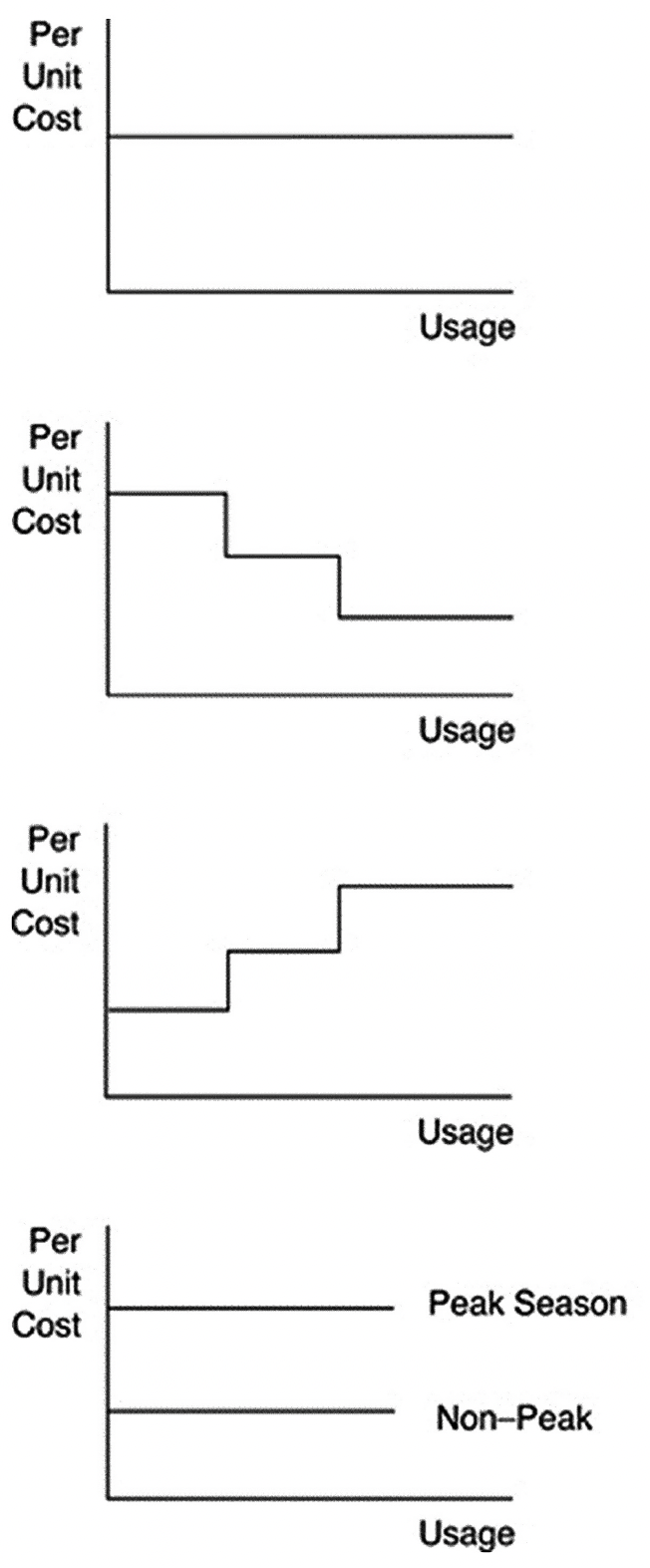
- Uniform Rate
- Price per unit does not vary with consumption
- Declining Rate
- Price per unit decreases with consumption
- Inverted Block Rate
- Price per unit increases with consumption
- Seasonal Rate
- Price per unit varies with seasons
Municipal Water Pricing
Adoption in the United States
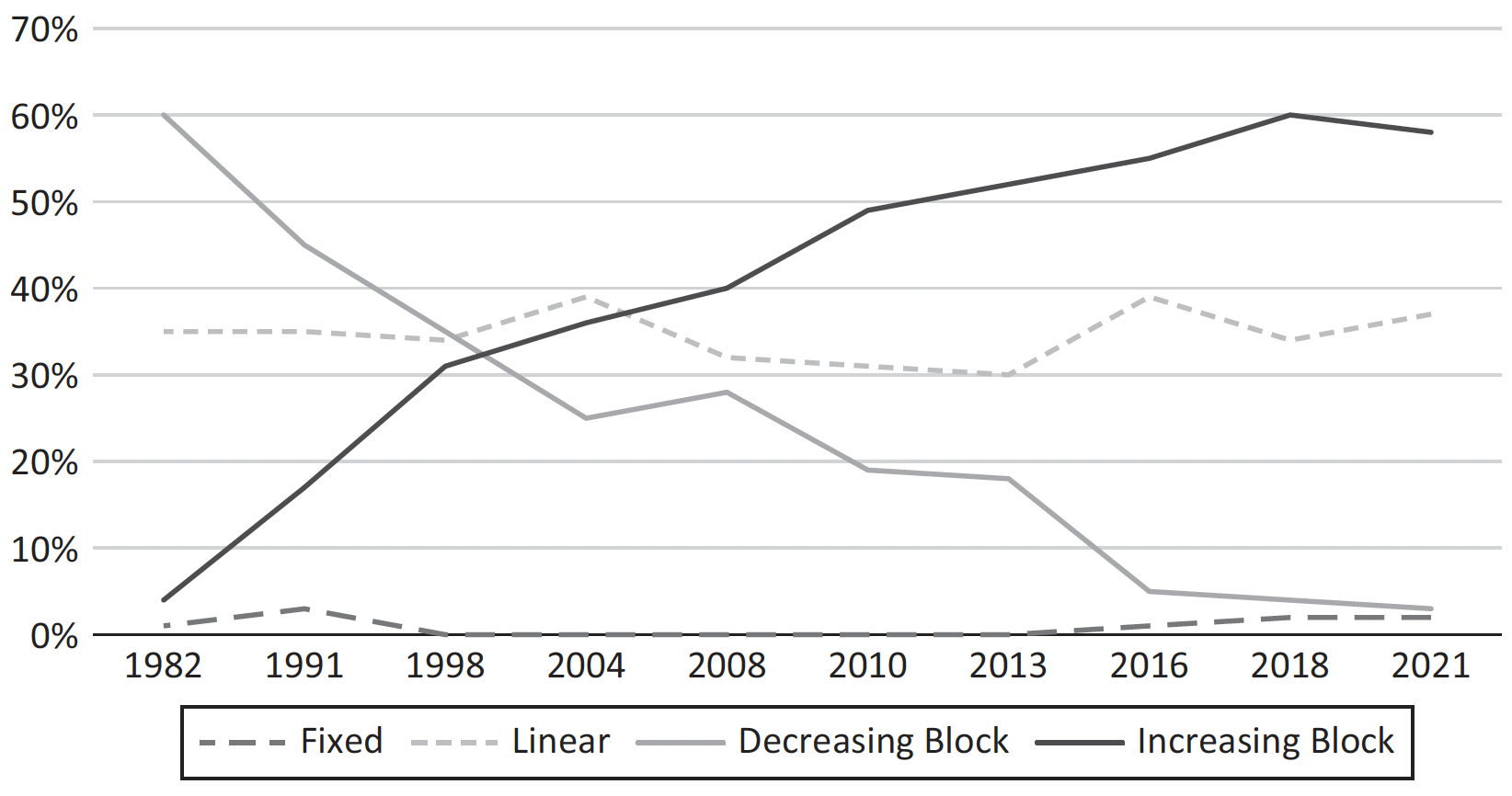
- Reflects a shift toward pricing that mirrors water availability
Municipal Water Pricing
Water Pricing in the World
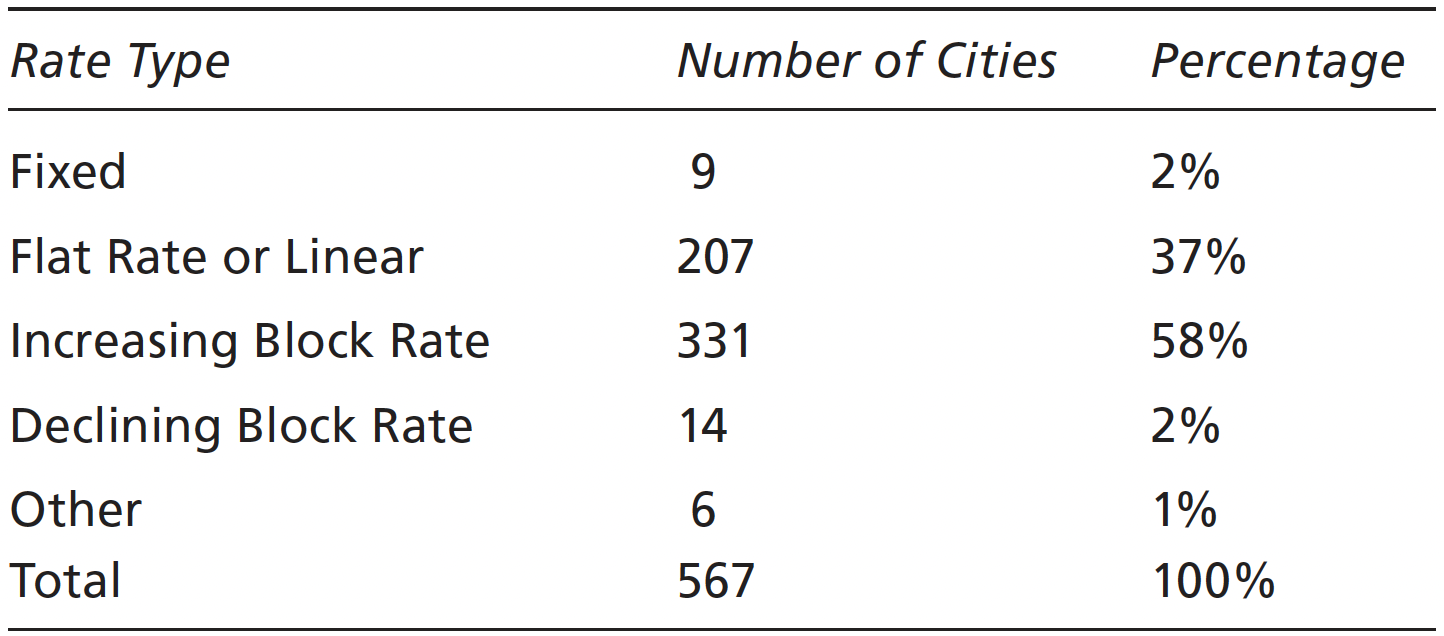
- Global Water International’s 2021 Tariff Survey:
- Increasing block rates are now the most frequently used worldwide
- Almost all surveyed cities use volumetric pricing
- 9 of the 14 cities with declining block rates are in the U.S.
Municipal Water Pricing
Marginal-Cost Pricing Principles
- Efficiency dictates:
- Prices should equal the marginal cost of provision
- Include marginal user cost when appropriate
- Corollaries:
- Peak pricing: Higher prices during peak demand periods
- For water, peak demand is usually in summer
- Seasonal users should pay extra costs associated with system expansion
- Peak pricing: Higher prices during peak demand periods
- Current Practices:
- Few utilities implement peak pricing
- Some U.S. cities (e.g., Tucson, Arizona) use seasonal rates
Municipal Water Pricing
Seasonal Pricing Examples
- Tucson, Arizona:
- Seasonal rates from May through September
- Increasing Block Rates as Seasonal Rates:
- First block equals average winter consumption
- Users enter higher blocks primarily during summer months
Municipal Water Pricing
Challenges with Seasonal Pricing
- Political Feasibility:
- Difficult to implement during non-drought periods
- More accepted during severe droughts
- Case Study: Santa Barbara, California:
- Severe drought from 1987 to 1992
- Rates and structures changed 10 times between 1987 and 1995
- Highest block rate reached $29.43 per cubic feet (ccf)
- Water use dropped by almost 50%
- Utility Perspective:
- Large reductions in use can threaten revenue stability
- High fixed costs need to be covered
Municipal Water Pricing
The Cost of Conservation: Revenue Stability versus Equitable Pricing
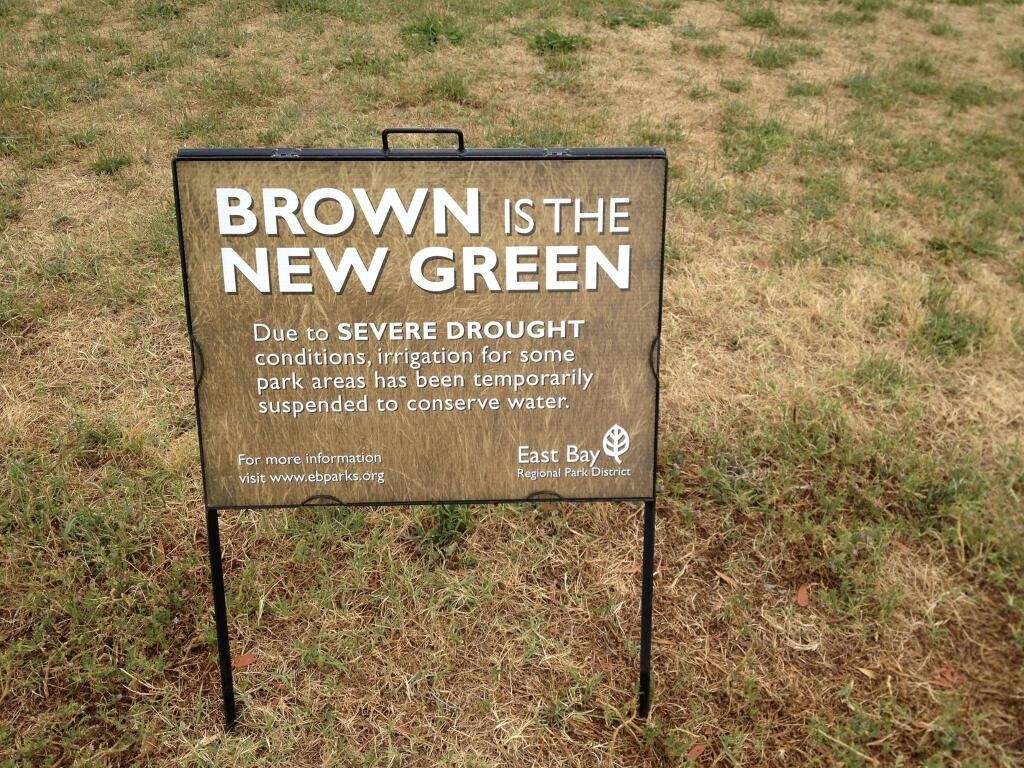
- California’s Drought Emergency (2014-2015):
- Governor Jerry Brown declared a drought state of emergency
- Mandated 20% reduction in water use, later increased to 25%
- Extreme conservation led to revenue shortfalls for utilities
Municipal Water Pricing
Revenue Stability vs. Equitable Pricing: Consumption-Based Fixed Rate (CBFR)
- Proposed Solution:
- CBFR divides the bill into three parts:
- Fixed costs: Shared equally among all users
- Fixed-variable costs: Based on proportion of consumption
- Variable costs: Based on actual consumption
- CBFR divides the bill into three parts:
- Goal:
- Stabilize utility revenues despite reductions in water use
Municipal Water Pricing
Practical Application of CBFR
- Case Study: Lomita, CA, and Longmont, CO
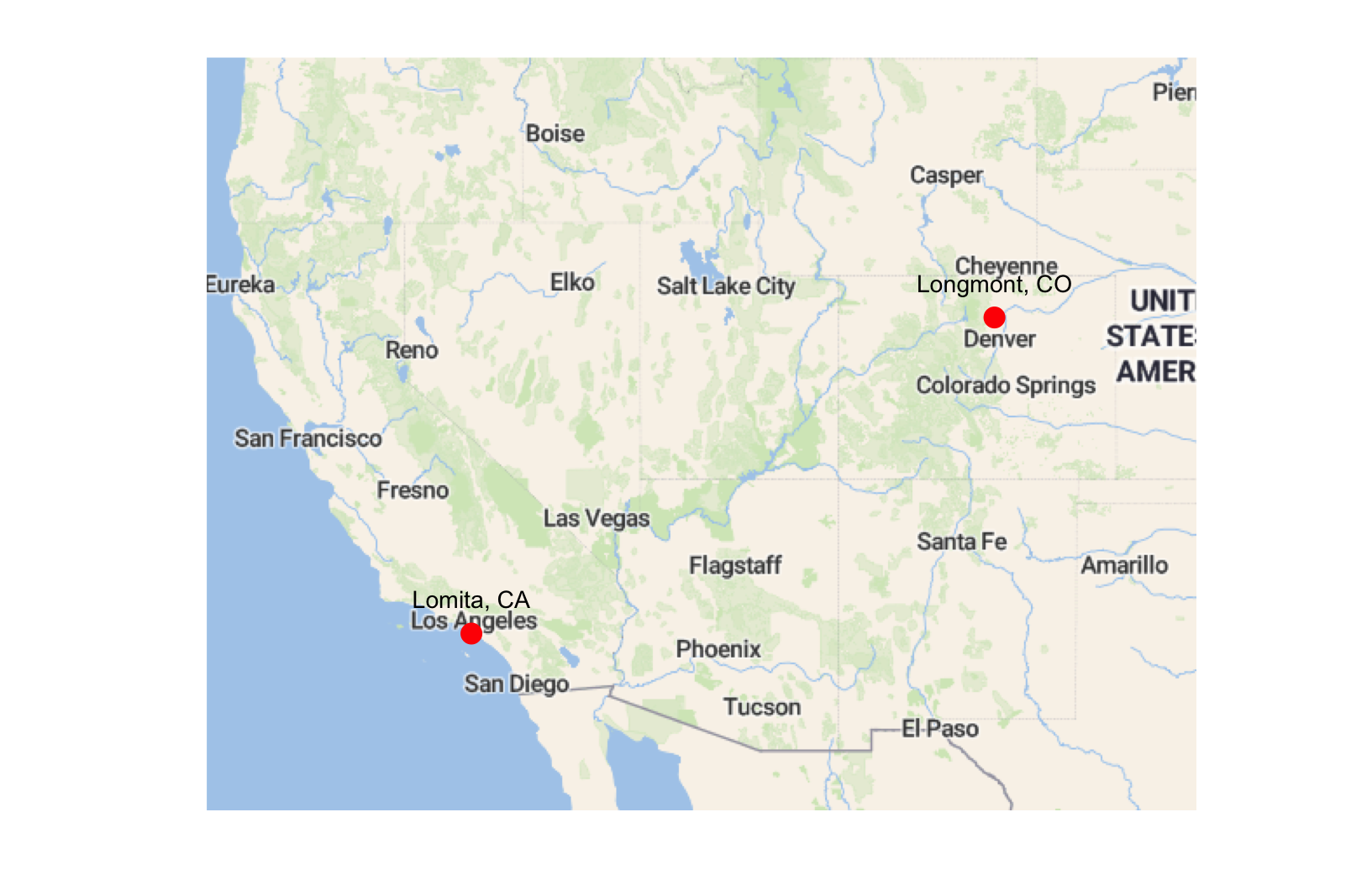
- CBFR stabilizes revenues for utilities
- Creates inequities among consumers:
- Low-use consumers face significant bill increases
- High-use consumers see bill decreases
- In Longmont, low-use consumers’ bills nearly tripled
Municipal Water Pricing
Addressing Equity Concerns
- Modified CBFR:
- Scaled Consumption-Based Fixed Rate (SCBFR):
- Adjusts rates based on household income
- High-use consumers pay more
- Low-use consumers pay approximately 30% less
- Scaled Consumption-Based Fixed Rate (SCBFR):
- Benefits of SCBFR:
- Maintains revenue stability
- Enhances affordability and equity
Municipal Water Pricing
International Case Study: Cape Town, South Africa
- 2018 Water Crisis:
- Severe restrictions on water usage
- High fines and significant tariff hikes
- Crisis was averted but highlighted future risks
Municipal Water Pricing
Cost-Reflective Pricing
- Principle:
- Customers should pay costs associated with their service
- Higher rates for those farther from the source or at higher elevations
- Current Practice:
- Utilities make fewer distinctions among customer classes
- Higher-cost users are effectively subsidized
- Leads to less incentive to conserve
Municipal Water Pricing
Full Cost Recovery (FCR) Pricing
- Definition:
- Allows utilities to earn more than a normal rate of return
- Includes environmental and resource costs
- European Union Directive:
- Water pricing policies should incentivize efficient use
- Contribute to environmental objectives
Municipal Water Pricing
Full Cost Recovery (FCR) Pricing
- Study on Nine European Countries:
- Austria, Bulgaria, Czechia, Estonia, France, Greece, Italy, Portugal, Spain
- Findings on Consumption:
- Price increases vary by country
- Estonia and Italy see significant consumption decreases (21.2% and 33.8%)
- Impact on Affordability:
- Measured by share of household income spent on water
- Bulgaria faces affordability issues under FCR pricing
Municipal Water Pricing
Full Cost Recovery (FCR) Pricing
- Efficiency vs. Equity:
- Efficient pricing may impact affordability
- Income redistribution schemes suggested to address this
- Practical Challenges:
- Redistribution schemes may be difficult to implement
- Subsidies or social pricing as second-best options
- Some European countries have adopted social pricing
- Social pricing ensures affordability by offering tiered rates or subsidies for low-income households
Municipal Water Pricing
Conclusion
- Balancing Objectives:
- Municipal water pricing must balance revenue, conservation, and equity
- Increasing block rates and seasonal pricing promote conservation
- Future Considerations:
- Adaptations in pricing can ensure water availability during droughts
- Policy changes may be necessary as climate change affects water resources